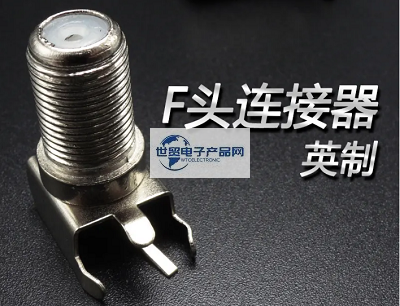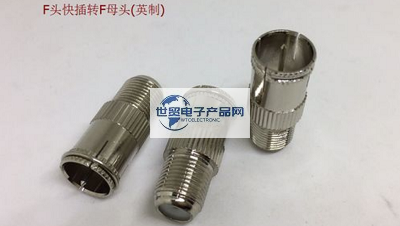Categorization:Product Information
With the development of TV, from simple TV to wired smart TV, advanced technology has brought us a variety of broadcasting programs and video information. Although television technology originally originated in the late 19th century, the first fully electronic television appeared in 1936. In the early 1950s, television entered the mass consumer market and created a whole new field of home entertainment. At that time, black-and-white TV would install a large Amphenol antenna on the roof, which could get good reception through the "rabbit ear" antenna on the roof. The TV and the antenna are connected by a 300 ohm cable. With the establishment of the national broadcasting network and the increase of program content, there are 2-13 high frequency channels (VHF) and 14-83 UHF channels.

---------------------------------------------------------------------------------------------------
In 1954, the Rose Parade was shown on color television for the first time, presenting color television programs to thousands of viewers in 22 cities. However, limited local programming and high costs delayed the spread of color television until the late 1960s. At that time, the TV cabinet was equipped with a circuit board, which could accommodate 24 vacuum tubes, high voltage power supply and large cathode ray tube. The most common connector for this type of TV is a multi-sized vacuum socket. Radio broadcasting and television in urban areas are running well, but in rural and mountainous areas, the reception capacity is poor and the viewing effect is not ideal. This problem is solved by coaxial copper cable. The 75 ohm RG-6/U coaxial cable is made from a very simple and inexpensive "F" connector that utilizes the solid conductor of the cable as the center contact of the connector. The cable network's broadband capability, which provided hundreds of television channels, as well as high-speed Internet, telephone, and security monitoring, made it the first choice for most consumers in the decades that followed. Cable companies can cut costs, offer local channels, or broadcast over the air for free. With the increase of television programs, the demand for high-resolution images has led to the continuous development of high-definition television (HDTV). Europe began to transform from analog to digital, and Berlin began to transform in 2003. In 2006, Luxembourg became the first country in transition. In the United States, the Federal Communications Commission approved the transition from analog to digital broadcasting by June 2009, ending the reign of the CRT in favor of flat-panel liquid crystal (LCD) and light-emitting diode (LED) displays. Including parts of the former Soviet Union, the Middle East, Asia, Central America and Africa, some countries and regions have not yet fully transformed. The aspect ratio has also changed from 4:3 to 16:9, supporting more movie formats. HDTV greatly improved image quality, extended service life, and allowed larger screens, which soon replaced early projection and plasma displays. In 2005, the development of 4K video has further improved the resolution of video, especially the flat panel display of more than 60 inches. The new 8K Ultra HD TV has a better screen size. The convergence of Internet technology has given birth to smart TV. Television in this era, through the network, expands the entertainment function of television, making it a convenient and interactive information game device. The rear connectivity I/O panel for contemporary digital TVs includes RCA audio jacks, RJ45 Ethernet, D-SubPC connector, USB interface, 21-pin SCART connector, and several HDMI connectors. The USB interface can be used to connect an external flash drive. The HDTV may also include an optical audio output connector that connects to the sound bar. It can be connected to the Internet via an RJ45 Ethernet cable or a wireless LAN. External streaming devices such as Roku and Amazon Fire TV sticks can be plugged into a USB port, allowing users to efficiently stream video content from a myriad of sources, with or without cable. This huge library immediately destroyed the business model of Blockbuster and other DVD rental stores. Streaming video has become one of the fastest growing sources of network bandwidth demand. Users can now watch their favorite shows and play games on their HDTV, PC, laptop, tablet or smart computer at any time. Broadcast, cable, and Internet infrastructures must be extended to support these features. This is a very good market in the connector industry. Evolving in the dissemination of information and entertainment, perhaps using artificial or augmented reality or even holographic imaging, faster, smaller and cheaper connectors will be developed.

---------------------------------------------------------------------------------------------------
2、 on the World Trade Electronic Products Network Platform and Sales Product Profile: World Trade Electronic Products Network-professional agent/production/sales of various { connector | harness | cable products }; If you have relevant [connector | harness | cable products] procurement/purchase needs or want to buy/know what connector | harness | cable products solutions we can provide, please contact our business personnel below; if you have relevant [connector | harness | cable products] sales/resources and promotion needs, please click "Business Cooperation ←" to negotiate with the specialist!